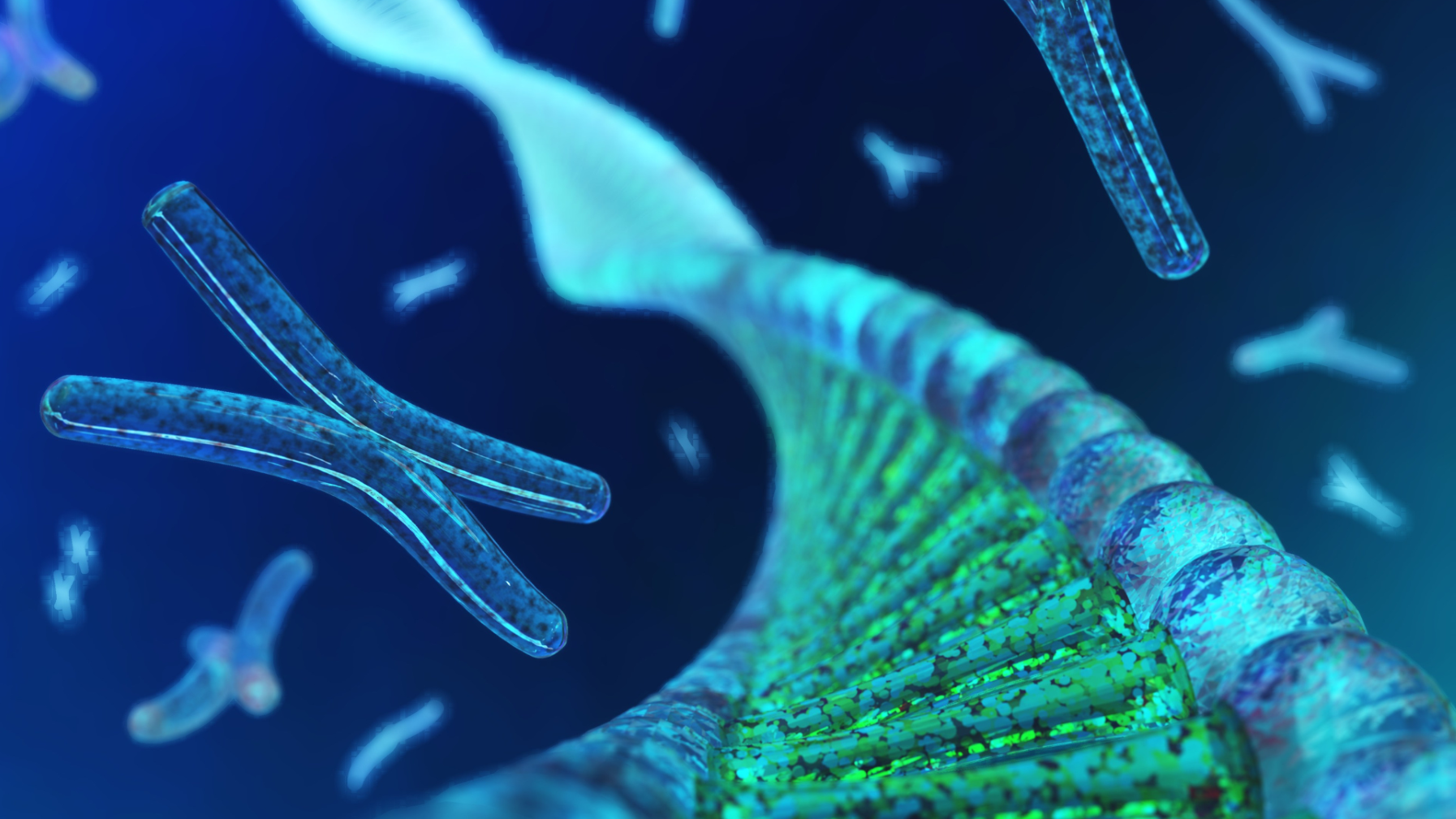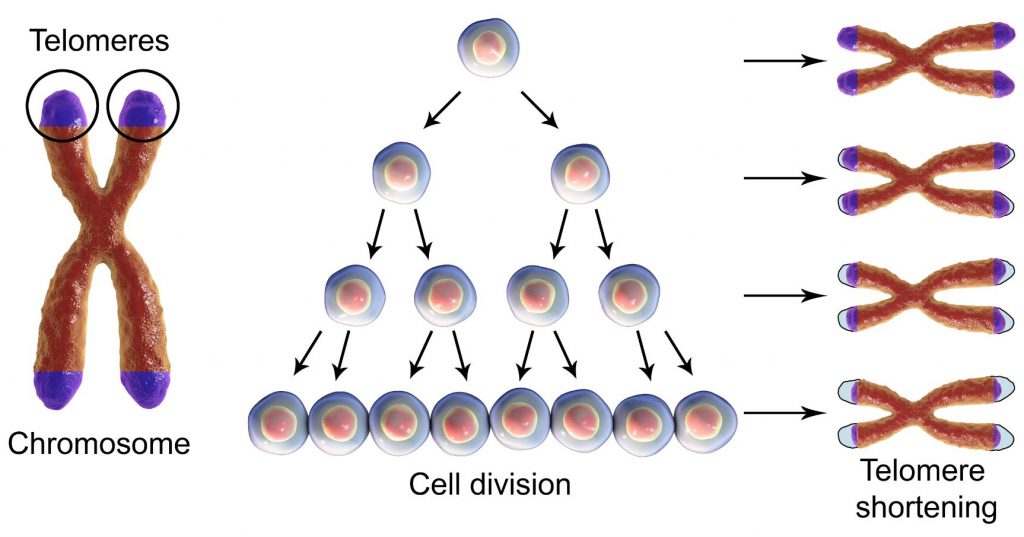
Service information on telomere length analysis using PCR technique.
VISBIO Co., Ltd. offers services for testing and analyzing the length of telomeres in products related to the health and beauty industry. Telomeres are composed of a group of nucleoproteins located at the end of chromosomes and act to protect chromosomes from shortening or damage during cell division. Telomeres naturally shorten with increasing age, but this shortening can occur at different rates depending on an individual’s daily habits, such as diet, exercise, sleep, and stress, among others. Research has shown a correlation between abnormal telomerase enzyme activity and certain types of cancer, such as colorectal and breast cancer. Therefore, the knowledge about telomere length and telomerase enzyme function is being utilized to extend a healthy lifespan. Telomere DNA length can be measured using the PCR technique under 2D cell culture in many products.
Get to know telomeres and telomerase
Telomeres are composed of a group of nucleoproteins located at the end of chromosomes. They serve the crucial role of protecting chromosomes from shortening or damage during cell division. This is because each time a cell divides, telomeres shorten, eventually reaching a critical point. As a result, cells are no longer able to divide, leading to cell deterioration and the process of cell death or apoptosis.
The image illustrates the shortening of telomeres during cell division
Telomerase is an enzyme that functions to protect and repair telomeres, making them an appropriate length to control their shortening beyond normal limits, preventing cell deterioration and rapid aging. It also prevents telomeres from becoming excessively long and entering an autophagic state, which would increase the risk of developing tumors or cancer. However, the functioning of telomerase in the body is limited due to modern lifestyles and environmental factors, such as smoking, alcohol consumption, lack of physical activity, air pollution, and various chronic diseases like obesity, diabetes, hypertension, high blood lipids, heart disease, and vascular diseases. These factors contribute to telomere shortening.
Studies have shown that abnormalities in the telomerase enzyme are associated with certain types of cancer, such as colorectal and breast cancer. Therefore, knowledge about telomere length and the functioning of the telomerase enzyme has been extended to further understand how to promote good health and longevity.
Telomere length analysis using PCR under 2D cell culture in products.
The technique commonly used for telomere length analysis is Quantitative Real-time Polymerase Chain Reaction (RT-PCR) because it is easy, convenient and fast. It is suitable for analyzing the telomere length from various samples like herbs, extracts, dietary supplements, herbal products. The 2D cell culture technique is commonly used for cell culture under controlled conditions outside the organism. It helps cells grow, divide, and increase in number rapidly and acquire properties similar to cells grown in laboratory animals or within the body before analyzing them using Real-time PCR.
The PCR method is a technique that amplifies the desired DNA and quantifies it in each round of the reaction instantly. The measured light signals are related to the increased amount of DNA in each round. This information is presented as Cycle Threshold (Ct) values. By applying these Ct values in a formula, the relative telomere length can be determined.
Literature:
- เนาวรัตน์ สุธัมนาถพงษ์และคณะ, การกลายพันธุ์และการเกิดโรคมะเร็ง, วารสารโรคมะเร็ง 2565, ปีที่ 42 ฉบับที่ 2 พฤษภาคม-สิงหาคม, 115- 129.
- สินสุดา เดชสุภา และคณะ, การเปลี่ยนแปลงความยาวเทโลเมียร์และจำนวนชุดไมโทคอนเดรียดีเอ็นเอจากเซลล์ชิ้นเอ็นในโรคโพรงกระดูกสันหลังส่วนเอวตีบแคบ: การศึกษานำร่อง, Chula Med J Vol. 61 No. 4 July – August 2017, 497-509.
- บัณฑรวรณ ธุระพระและคณะ, การประเมินอายุชีวภาพด้วยความยาวเทโลเมียร์, การประชุมวิชาการเสนอผลงานวิจัยระดับบัณฑิตศึกษาแห่งชาติ ครั้งที่ 21, วันที่ 27 มีนาคม 2563.
- Gaebler M, Silvestri A, Haybaeck J, Reichardt P, Lowery CD, Stancato LF, et al. Three-dimensional patient-derived In vitro sarcoma models: promising tools for improving clinical tumor management. Front Oncol 2017; 7: 203.


